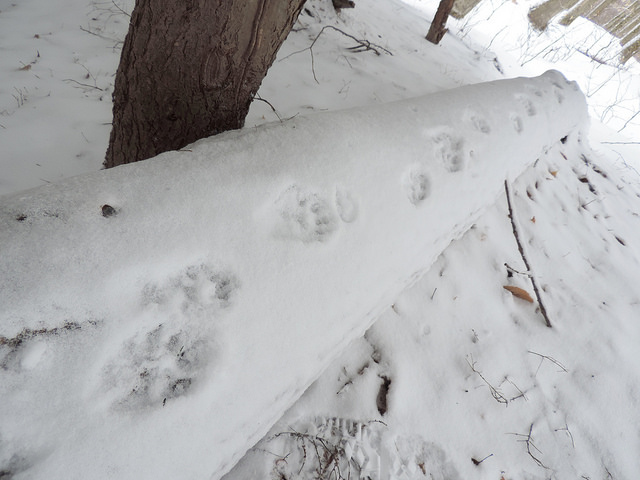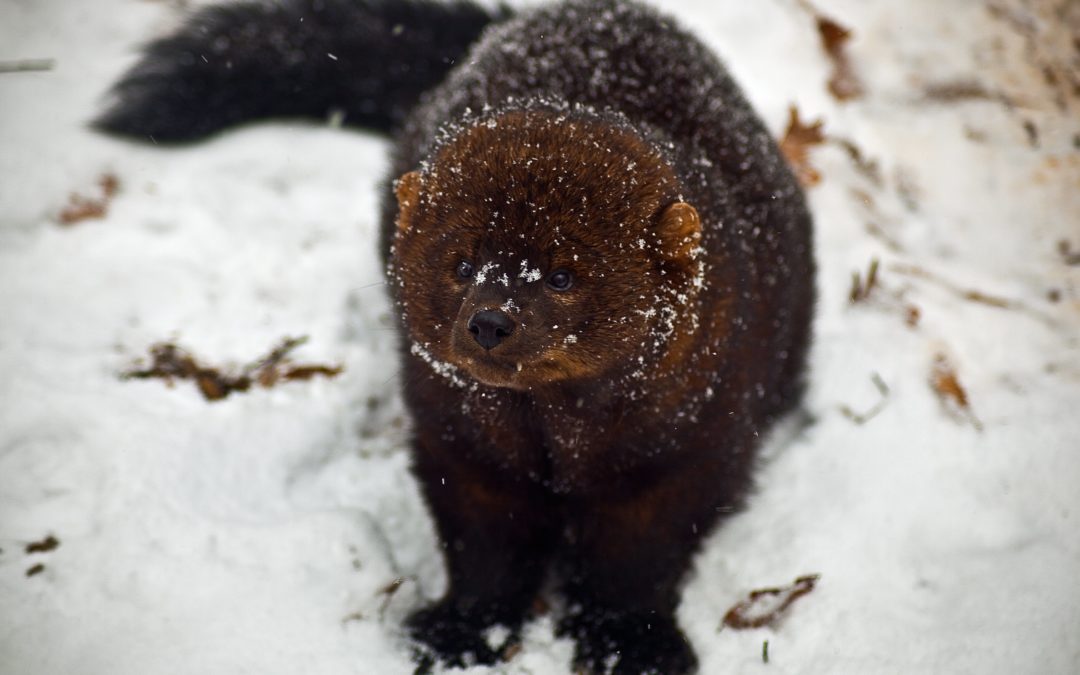There are some animals that are familiar and often seen. Canada Geese, White-tailed Deer, squirrels, just to name a few. Other animals are more secretive; more leery of human presence. They almost seem like myths. One of these animals is the Fisher (Martes pennant).
Despite often being called a “fisher cat” these mammals are not feline. Fishers are the second largest members of the weasel family in our region. The River Otter is the largest. And like other weasels, Fishers have low profiles with short legs, long bodies, humped backs, and furry tails. Males weigh in at seven to fifteen pounds and females four to nine pounds. The misleading name is thought to have come from this North American mammal’s resemblance to a European polecat, called a “fitchet”.
And despite the descriptive name, Fishers do not eat fish. They are generalists, eating a wide variety of food, taking advantage of what is available. They eat some nuts, berries and other fruit. However, most of their diet is more carnivorous. They prey on small mammals including rodents, squirrels, chipmunks, and rabbits as well as already dead animals, called carrion.
Their adaptations lead to their success as predators. Their long bodies help them move into tunnels and under the snow. They use their sharp teeth for killing and eating their prey. Large feet aid in walking atop snow and semi-retractable claws are used for climbing and grasping.
They are also the only known predator of Porcupine. And to eat that quill-covered animal, something a little more specialized is necessary. When a Porcupine is being attacked it will position itself face up against a tree, quills facing out. The Fisher can counter attack by climbing into the tree. Their hind feet rotate almost 180 degrees, which allows Fishers to descend the tree headfirst and attack the Porcupine’s vulnerable face. Once I came across a dead Porcupine in the woods. All the damage was done to its face and belly where it does not have quills to protect it. It was clearly the work of a Fisher.

Fishers prefer closed canopy forests of both evergreen and deciduous trees from coast to coast in North America and Canada. If predators such as Fishers are in these places, it means the habitat is healthy. There is enough food, shelter, and water to support them. However, this was not always the case. In the late 1800s through the early 1900s, extensive logging and unregulated trapping decimated Fisher populations. Fishers were not alone. Many other animals share a similar story of decline due to human use of the land and an understanding of what we thought was right at the time.
But soon after, we started to see that our unchecked consumption of natural resources had severe consequences. With conservation of habitat, trapping regulations, and reintroduction programs, Fisher populations recovered. And recovered well. In this region, small numbers of Fishers were reintroduced to the Catskills Region in New York from the Adirondacks in 1979. A larger number of Fishers were introduced to northern Pennsylvania in 1994 – 1998. From those locations, populations have grown and spread. Fishers are now moving into areas of semi-forested land and closer to human habitation. One was even spotted walking down a Bronx sidewalk in 2014 by a police officer working the night shift. It was assumed to be surviving on a diet of rats and squirrels and taking shelter in pipes and tunnels.
The recovery of the Fisher population is really a conservation success story. And perhaps even an example of nature’s ability to adapt to our continually growing human population.
But not everyone sees it that way. Many have a dislike and distrust of predators. Maybe it is instinct; a connection in our ancient brain to a time when the danger of a predator was much more real. Maybe it feels like an invasion into our safe space. Maybe it feels like unfair stealing of our game animals. If the predators eat them, we cannot.
But, as the title of a poignant children’s book by Cherie Mason states, “Everybody’s Somebody’s Lunch.” We live in a world of predator and prey. And sometimes it is not pretty. In the story, a girl loses her cat to a forest predator. She is upset, and understandably so. But she also goes on to explore other predators and their need to survive by eating other animals. Even though at first those predators seem dangerous.
What is dangerous is when we demonize animals because of who they are. When we assign a value to a species based on their very nature. And then let this value prevent us from understanding them and their role in relation to everything else. Predators aren’t mean. They evolved to be part of a system. They create a balance by keeping their prey in check.
No one understood this more than Aldo Leopold, a forester, educator, and writer in the first half of the twentieth century. He was revolutionary at the time, advocating for a land ethic that emphasized not individual parts, but the entire system. In his book Round River, he wrote:
“If the land mechanism as a whole is good then every part is good, whether we understand it or not…To keep every cog and wheel is the first precaution of intelligent tinkering.”
We’ve already tinkered with the land. And now we are left to continue tinkering with the hopes of getting it “right”. Or at least as right as we think now. We can’t make conservation decisions on what we think is “nice” or “nasty”. All we can do is observe, ask, measure, count, test, reflect, observe, and ask again. All in the hopes of furthering our understanding. And in the midst of that, we may also be surprised and awed by those who share our world.
Audubon Community Nature Center builds and nurtures connections between people and nature. ACNC is located just east of Route 62 between Warren and Jamestown. The trails are open from dawn to dusk as is Liberty, the Bald Eagle. The Nature Center is open from 10 a.m. until 4:30 p.m. daily except Sunday when it opens at 1 p.m. More information is online at auduboncnc.org or by calling (716) 569-2345.
Katie Finch is a naturalist at Audubon.


Recent Comments